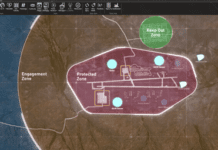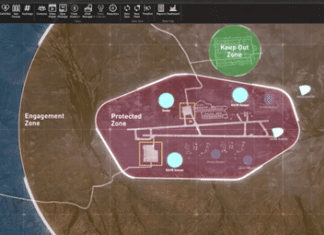
This post is also available in:
 עברית (Hebrew)
עברית (Hebrew)
The US Marine Corps is field-testing a next-generation narrowband satellite communication system. The Mobile User Objective System (MUOS) is expected to be 10 times faster than the legacy satellites it was designed to replace.
It consists of four orbiting satellites and an on-orbit spare satellite and four ground stations. MUOS uses the ultra high frequency band to provide faster voice, video and data communications, but there have been significant delays in its attempts to get terminals to work with the new signal. According to the Marine Corps Systems Command, approximately 4,300 fielded antenna kits are being distributed along with 1,300 diplexer kits which allow vehicular systems to access the satellites.
The technology is developed for the Navy by Lockheed Martin. “MUOS is essentially software and an antenna capability augmenting existing hardware,” said Noah Slemp, systems engineer at MCSC. “It’s similar to adding an application to a cellphone.”
The MUOS is a secure ultra-high frequency (UHF) satellite communications (SATCOM) for mobile forces, according to Lockheed’s website. The radio terminal users — supporting mobile, tactical ground, sea or air operations — can seamlessly connect around the globe and into the Global Information Grid, as well as into the Defense Switching Network (DSN). The system’s new capabilities include simultaneous crystal-clear voice, and video and mission data on a high-speed Internet Protocol-based system.
The MUOS network is sustained by an initial configuration of four orbiting satellites and four relay ground stations. An on-orbit spare will ensure the network is always available to support U.S. and allied mobile forces, as well as actively supporting the legacy UHF system.
A May report from the Government Accountability Office noted that the availability of MUOS had been delayed over several years following deficiencies found during operational testing in November 2015. The delays have also held up development of the Army’s Manpack, some of which are meant to use MUOS. The Manpacks are now slated to be fielded by March 2020—two years later than originally planned. Without MUOS availability, the Manpack would be limited to legacy systems, according to c4isrnet.com.

























